How your business can benefit from a streamlined DSE Risk Assessment process.
Research by OFCOM, reveals that as a nation we are now spending more time in front of a screen than we do sleeping. In a recent survey, two-thirds of the participants reported that they now work longer hours than they did just two years ago. The impact of these extended hours, sitting incorrectly and/or in front of screen equipment, whether at work or socially, can cause visual fatigue, stress, and musculoskeletal disorders. While, as employers, you can not control what your employees do when they leave the workplace, you have a responsibility for their health, safety and well being when engaged in a work activity. DSE Risk Assessment is a critical part of this.
The use of effective ergonomics in the workplace ensures that the capabilities and limitations of employees are considered and addressed when work is assigned. Applying ergonomics across the workforce, has been proven to reduce accidents, injury and ill health, improve on productivity and boost morale.
 As employers, you can help protect your employees by performing regular display screen equipment (DSE) checks through a programme of workstation risk assessments. DSE includes display screens, laptops, touch screens, smartphones and similar devices.
As employers, you can help protect your employees by performing regular display screen equipment (DSE) checks through a programme of workstation risk assessments. DSE includes display screens, laptops, touch screens, smartphones and similar devices.
Under the Health and Safety (Display Screen Equipment) Regulations 1992, DSE workstations need to be assessed regularly and effectively. This can be done either by fully trained and informed staff or by implementing an online DSE Risk Assessment solution.
ErgoWize from VinciWorks is an award-winning online DSE course and risk assessment that instructs employees in the correct setup and safe use of their computer workstation.
This online course provides detailed images and interactions showing the correct sitting position, keying position and hand placement when using the mouse. There are additional animations showing exercises and stretching techniques used to help reduce the amount of stress placed on joints and muscles when sitting for long periods of time.
The ErgoWize system ensures DSE compliance in three powerful steps:
- online training,
- workstation risk assessment
- resolution.
After your employees complete the eLearning course, a workstation Assessment is triggered automatically by the system. This ensures the employees are assessed immediately after completing the required training. The DSE Risk Assessment allows users to self resolve low-risk issues and escalate high-risk issues. This significantly reduces the number of risks escalated to management, reducing administration time required.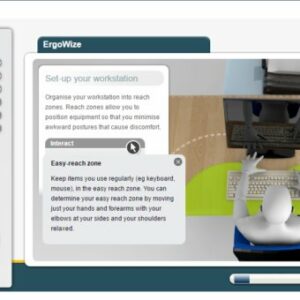
Ideal for companies with 100 employees to 100,000+ employees, the ErgoWize system provides drill-down reporting giving reports you can action, rather than static information. The ErgoWize system allows full trend analysis of Workstation risk issues raised and because the reports are dynamic, you can drill down into the detail with a click of your mouse.
The Compliance dashboard also provides a unique view of how your roll out of training and assessments is progressing. The Compliance module also provides closed loop training – it can import your users from a third party system, auto enrol them on the course and assessment, automatically send reminder emails and then also auto re-enrol users every 12 months (or whatever time frame your organisation prefers).
Looking for more in-depth and engaging health and safety training? Explore our comprehensive eLearning library and try any of our courses for free.

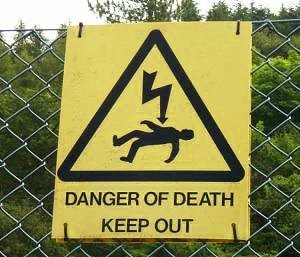 der the
der the 

 Guidance from the Health and Safety Executive (HSE) explains your legal obligation under
Guidance from the Health and Safety Executive (HSE) explains your legal obligation under 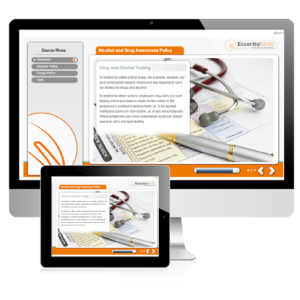
 As employers, you have a legal, moral and social responsibility to improve driver safety, hence improving the safety of your employees and the general public. Managing road risk can also have positive financial benefits. For example, road traffic accidents can cost your organisation increased insurance premiums, lost productivity and revenue, damaged stock and possible sick leave. Reducing accidents by raising awareness can thus, improve your business’ motoring budget.
As employers, you have a legal, moral and social responsibility to improve driver safety, hence improving the safety of your employees and the general public. Managing road risk can also have positive financial benefits. For example, road traffic accidents can cost your organisation increased insurance premiums, lost productivity and revenue, damaged stock and possible sick leave. Reducing accidents by raising awareness can thus, improve your business’ motoring budget. Rolling out a system of driver assessment and training is an effective way of
Rolling out a system of driver assessment and training is an effective way of 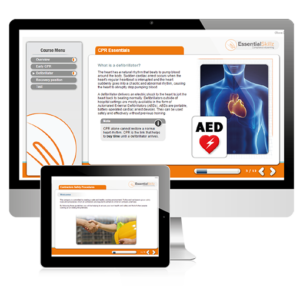 , effectively delivers the information needed to ensure your employees can recognize the key signs in an emergency situation.
, effectively delivers the information needed to ensure your employees can recognize the key signs in an emergency situation. 
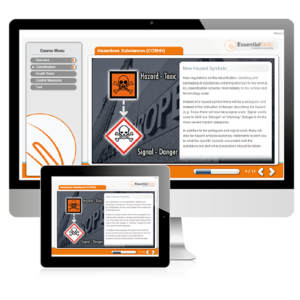 n learn about substances and responses that are specific to your organisation. A designated course administrator can edit the text and images within the course using our integrated authoring tool, and link to organisation-specific documentation, all at no extra cost.
n learn about substances and responses that are specific to your organisation. A designated course administrator can edit the text and images within the course using our integrated authoring tool, and link to organisation-specific documentation, all at no extra cost.
 What about contractors and sub-contractor responsibilities?
What about contractors and sub-contractor responsibilities?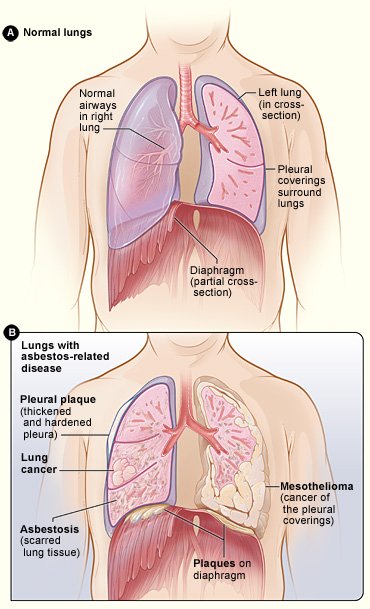
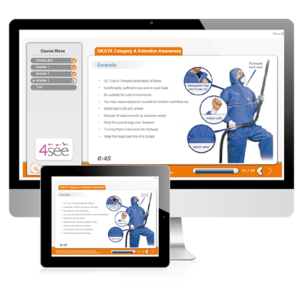 What training do you need and where to find it?
What training do you need and where to find it?